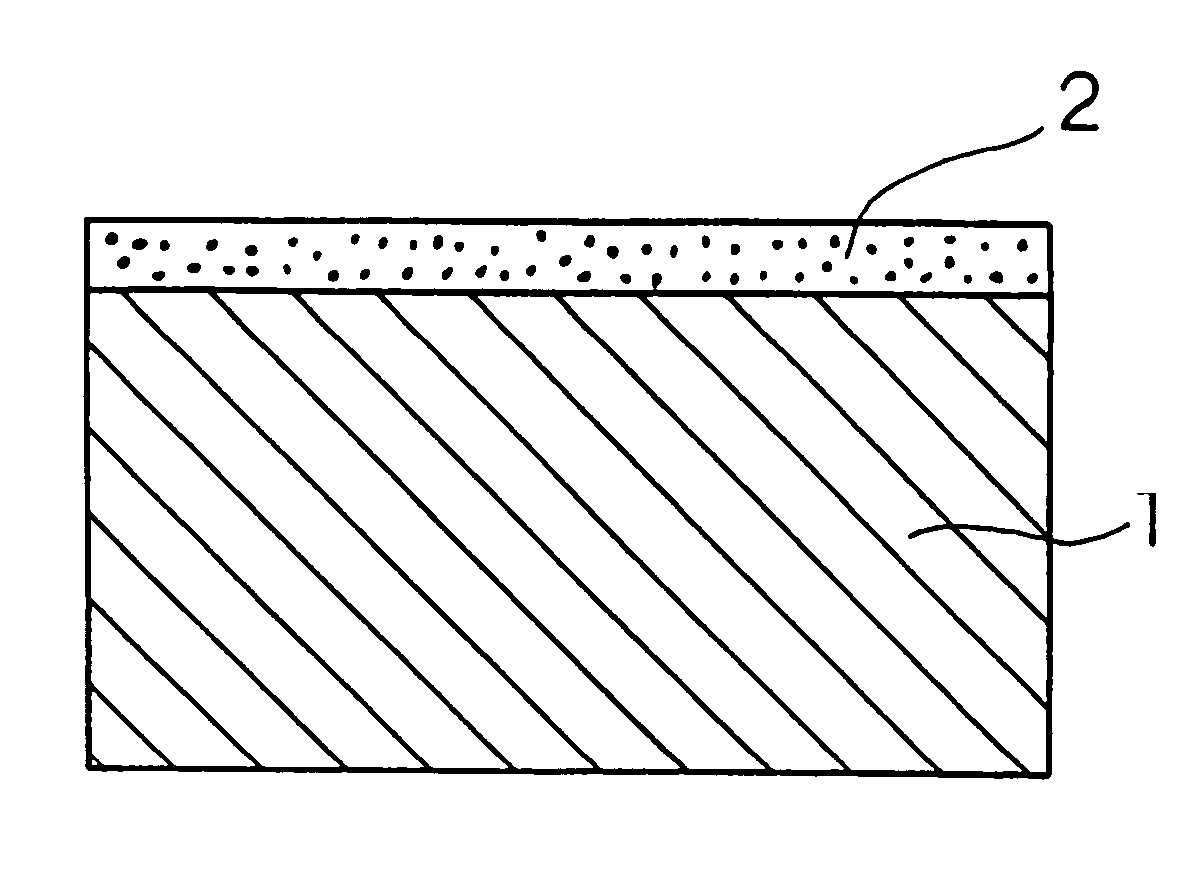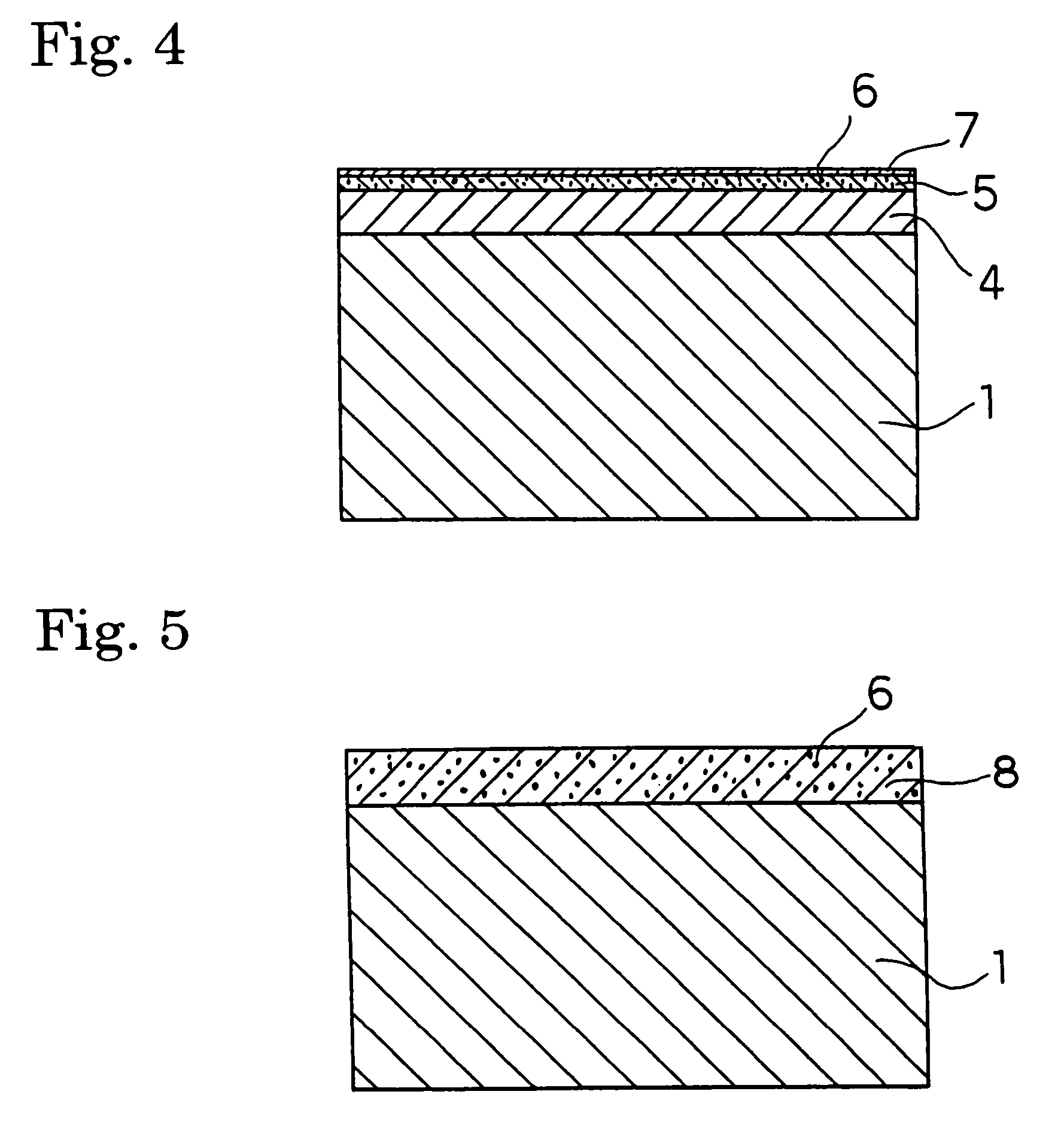Glass layered ceramic product
a technology of glass layered ceramics and products, applied in clayware, other domestic objects, chemistry apparatus and processes, etc., can solve problems such as increasing production costs, and achieve the effect of increasing production costs and excellent antibacterial functions
- Summary
- Abstract
- Description
- Claims
- Application Information
AI Technical Summary
Benefits of technology
Problems solved by technology
Method used
Image
Examples
example
“Preparation Step”
[0133]A base material for tiles 1 is prepared from the following composition cut into a quadrate of 50±2 mm square (thickness: 10 mm or less).
[0134]
(Blending Proportions for Base Material 1 (% by mass))Feldspar28.2Silica sand11.8Sericite15.0Clay45.0
[0135]A first glazing material and a second glazing material having the following compositions are prepared.
[0136]
(Blending Proportions for First Glazing Material (% by mass))Feldspar35.0Silica sand46.9Lime15.9Clay2.2
[0137]The first glazing material contains 2% by mass of K2O.
[0138]
(Blending Proportions for Second Glazing Material (% by mass))Silica sand31.0Lime6.0Clay13.0Antibacterial agent50.0
[0139]The antibacterial agent has the following composition (% by mass).
[0140]
Ag2O25.88P2O54.98CaO0.01SiO256.84Al2O39.36Fe2O30.10K2O0.43Na2O0.06SrO0.01Ignition loss2.34
[0141]The second glazing material contains 2% by mass of Na2O.
“Glazing Step”
[0142]As shown in FIG. 6, the first glazing material is glazed on the surface of the bas...
example 1
[0168]“Preparation Step” As shown in FIG. 12 and FIG. 13, a base material for tiles 1 is prepared from the following composition cut into a quadrate of 50±2 mm square (thickness: 10 mm or less).
[0169]
(Blending Proportions for Base Material 1 (% by mass))Feldspar28.2Silica sand11.8Sericite15.0Clay45.0
[0170]A first glazing material and a second glazing material having the following compositions are prepared.
[0171]
(Blending Proportions for First Glazing Material (% by mass))Feldspar42.456Frit1.617Lime11.827Dolomite5.054Zinc white1.516Gairome clay4.043Alumina1.769Silica sand9.603Opacifier6.368Chamotte fireproof material15.163Pigment0.581
[0172]The frit herein has the following composition (% by mass).
[0173]
SiO249.3Al2O311.1CaO0.2Na2O19.1K2O1.0B2O319.2
[0174]The first glazing material contains 2% by mass of K2O.
[0175]
(Blending Proportions for Second Glazing Material (% by mass))Silica sand31.0Lime6.0Clay13.0Antibacterial agent50.0
[0176]The antibacterial agent has the following composition ...
example 2
[0187]In the preparation step of Example 1, 2% by mass in terms of outside account of the zircon fine particles 3a in Example 1 are contained in the second glazing material. The other conditions are the same as in Example 1.
PUM
| Property | Measurement | Unit |
|---|---|---|
| particle diameter | aaaaa | aaaaa |
| particle diameter | aaaaa | aaaaa |
| thickness | aaaaa | aaaaa |
Abstract
Description
Claims
Application Information
 Login to View More
Login to View More - R&D
- Intellectual Property
- Life Sciences
- Materials
- Tech Scout
- Unparalleled Data Quality
- Higher Quality Content
- 60% Fewer Hallucinations
Browse by: Latest US Patents, China's latest patents, Technical Efficacy Thesaurus, Application Domain, Technology Topic, Popular Technical Reports.
© 2025 PatSnap. All rights reserved.Legal|Privacy policy|Modern Slavery Act Transparency Statement|Sitemap|About US| Contact US: help@patsnap.com



